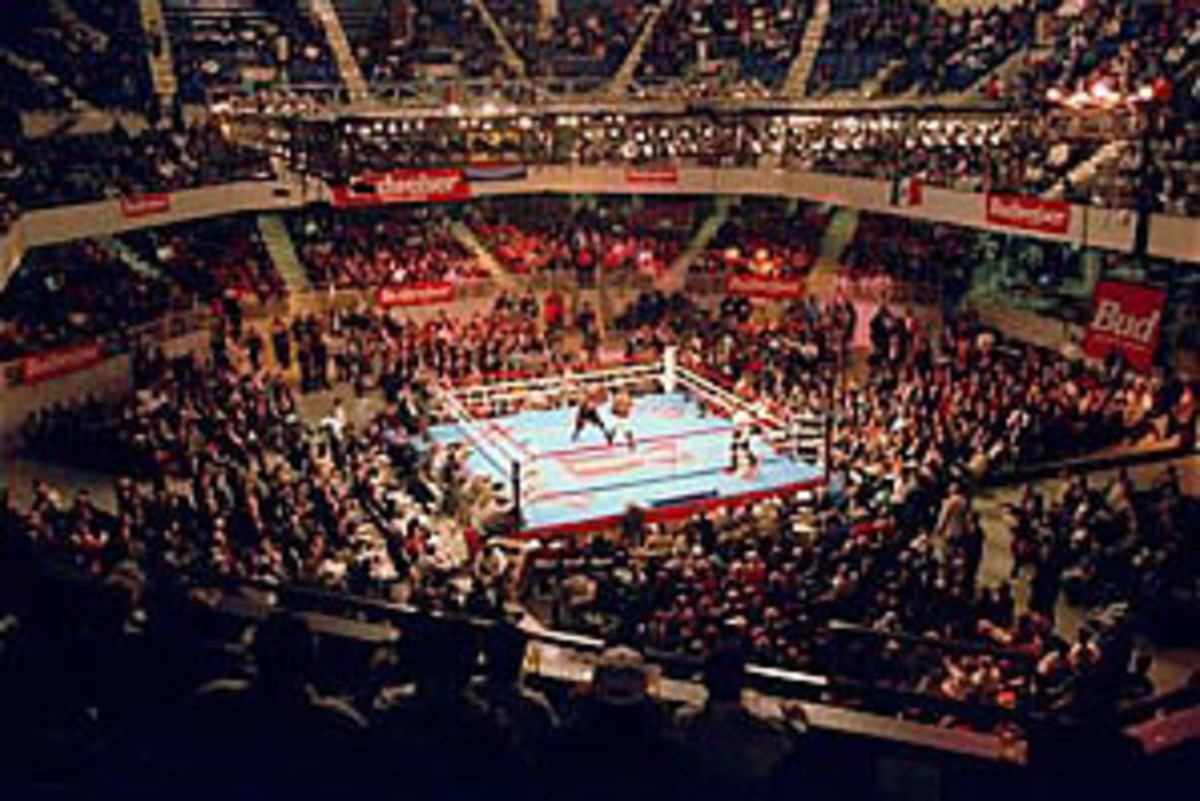Fight club: L.A.'s Grand Olympic Auditorium was a knockout


The Grand Olympic Auditorium -- the Grand described the address, not its condition -- was a concrete vault, built for the 1932 Olympics but long since consigned to the indignities of weekly boxing and wrestling. By the time I got there in 1979, to cover the fights for the Los Angeles Times, even those indignities were passing. The networks were beginning to poach whatever attractions they could, leaving the small clubs without the denouement of long-wrought rivalries. It was a failing scene.
Still, in 1979, dying or not, this was about as authentic as it got. My first Thursday night at ringside: Who knows who fought, or even how well for their $400 payday. All I know is he produced a terrific arterial spray that turned my Christian Dior shirt (1979, remember?) into a DNA bank. And then, not noticing that all around me had quickly gathered their belongings and retreated to the safety of portals, I sat there and endured a second dousing, this of hurled beer cups, as the decision was announced. And then, bloodied and sodden (let's just assume it was beer in those cups), I remained to catch a quarter behind my ear, as more charitable fans participated in the ritual coin shower.
Although I subsequently learned escape routes and thereafter was able to anticipate most chaos, I never did penetrate all the mysteries of the Olympic, not in a hundred or so Thursday nights there. The fans, almost entirely Hispanic by now but still peppered with Hollywood sportsmen, had a passion for boxing that I never again observed, not for any sport. They cheered their heroes wildly and enforced fairness as best they could. Unpopular decisions unleashed hell -- anything might come out of those upper decks, mustard jars, cherry bombs and, in one famous riot, sections of seats.
Others, more civilized, flashed signals across the ring, betting the fight dozens of ways. There were parlays even for the ring announcer, the ridiculously dapper Jimmy Lennon. "You can bet Jimmy four ways," my friend Harry told me. "He'll either say, 'Known the world over,' 'needs no introduction,' both or neither." Harry once opened his alligator-leather brief case to get at his cash and I saw inside a pearl-handled pistol with an 18-inch barrel. And if it wasn't actually that big, let's stipulate it wasn't a Saturday night special.
The fighters themselves, produced from dungeon-like recesses in the building (where the smell of urine and lineament was overpowering), were a shifting demographic, even during my short time. It was no longer possible to build up Danny Lopez, or any of the other great Hispanic fighters of the day, and then reap a bonanza down the line. The good ones moved on. Instead the Olympic had to exploit the cultural tensions of the day. Mexican vs. Hispanic, Black vs. Hispanic, White vs. Anybody. And then they flew Koreans in. By then it wasn't so much a sport as a carefully crafted race riot.
That didn't interfere with the ethos of desperation, though, and I doubt I will ever again see such urgency, some 18-year-old from the barrio fighting for his life (or, in two cases, right before my eyes, to the death), getting stitched up afterwards by the Fight Doc.
Another mystery by the way. The Fight Doc, who reclined ringside in his white smock (looking a bit like Al Lewis, playing a meat cutter), had done time for manslaughter, conducted a more or less free clinic in Watts and never missed a fight. Nights, he once told me, he put on old Benny Goodman records and played along on his bass viol. He just sawed away into the wee hours, I guess.
2. Crosley Field, Cincinnati (former home of the Reds)The stadium-equivalent of a wooden roller-coaster.
3. Dodgertown, Vero Beach, Fla.Newly defunct, and deservedly so, but the spring-training facility featured an open bar and unlimited shrimp cocktails for the hometown scribes.
4. Indianapolis Motor Speedway If you happened to grow up there, this place, colored by the tragedy of ancient pileups, will always have a mystique.
5. The Los Angeles ColiseumWhatever stadium replaces this relic will be missing the sense of history and tradition those end zone portals provide.
